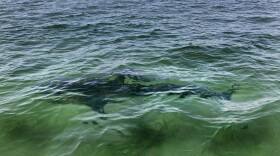-
An invasive aquatic plant is taking over the Connecticut River, and scientists are putting red dye in the river to figure out a solution. Hydrilla, also called waterthymes, is a threat to aquatic wildlife and drinking water.
-
It could be another peak year for Connecticut’s osprey after the shorebirds’ numbers were decimated just a few decades ago. Community scientists are part of the reason the osprey population has been able to soar.
-
Smoke and haze over the Northeast from Canadian wildfires forced residents to take some extra precautions. But wildlife experts say it is too soon to tell if there will be any long-term health impacts on animals.
-
The legislation bans the intentional release of helium-filled balloons into the atmosphere. Even a single balloon could earn you a warning from police.
-
Cold-stunned sea turtles who began rehabilitation on Long Island in the fall have been returned to warmer waters.
-
Over the last month, six humpback and sperm whales have washed up dead between Long Island and New Jersey, a region being surveyed for offshore wind development called the New York Bight. In response, ocean advocacy groups are calling for a federal investigation.
-
A key part of Connecticut’s coastline has gotten a $4 million refresh. Officials unveiled the completion of the restoration project this week.
-
Community groups in Sag Harbor are calling on PSEG Long Island and the Long Island Power Authority to reconsider proposed construction of an underground transmission wire under a "critical environmental area."
-
Sharks, urban wildlife, and invasive species. That's what we'll explore in Living with wildlife, Part 2.
-
Do humans need to rethink how we interact and live with our wildlife neighbors?
Play Live Radio
Next Up:
0:00
0:00
Available On Air Stations










